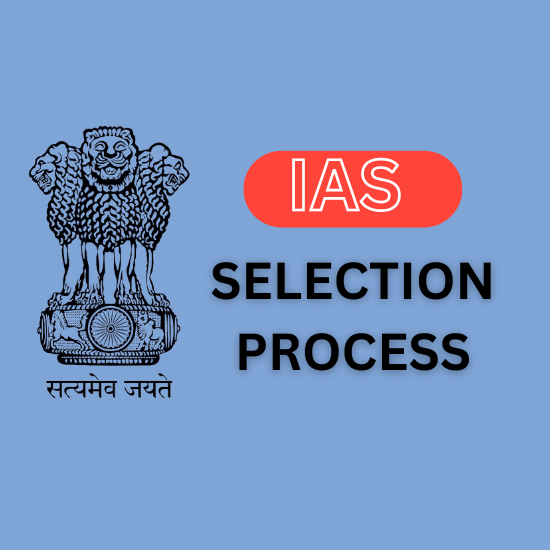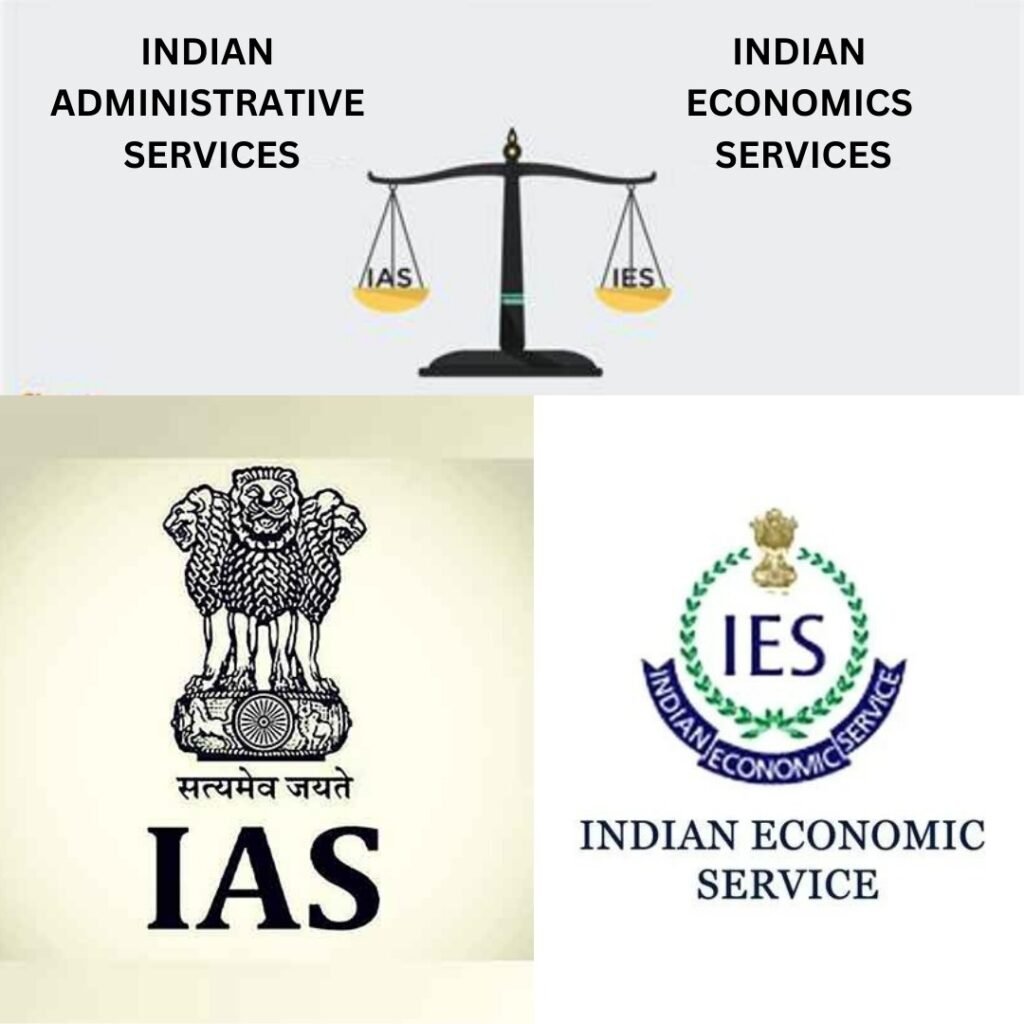
Essential Difference Between Indian Economic Service (IES) & IAS
- The UPSC conducts both IAS and IES.
- Both the cadre offers challenging and rewarding career opportunities.
Are you facing a dilemma between the Indian Economic Service (IES) and the Indian Administrative Service (IAS)? Let’s understand the difference. Interestingly, both these examinations are conducted by the Union Public Service Commission, providing exciting and challenging career opportunities in government.

Aspirants often need clarification while picking the proper exam that aligns with their skills and aspirations. Although both these exams offer prestigious careers, the roles they play and the paths they tread are distinctly different. So, how can an aspirant differentiate between these two giants of the civil service realms?
Indian Economic Service: The Masterminds of Economics
It should be known that the Indian Economic Service is a Group A and an inter-ministerial and inter-departmental service. Our first Prime Minister, Late Pt. Jawahar Lal Nehru envisioned the exam in 1961 and was operationalised in 1964. The examination selects candidates to work in various posts in Ministries and Departments dealing with economics and social sectors.

Imagine yourself as the government’s economic brain; they help shape policies that drive national growth, trade and finance. With their in-depth knowledge and expertise in economics, statistics, and financial management, they are tasked to handle crucial tasks.
IES officers are tasked to advise the government on fiscal and monetary policies, crafting blueprints for development and tackling serious issues like inflation and unemployment. They would also conduct economic research, analyse data, and provide deep insights to make informed policy decisions.
IES Officers provide project valuation for projects ranging from infrastructure projects to multiple social welfare schemes. They would assess their feasibility and impact on the economy. They actively participate in negotiations with international agencies like the World Bank and the International Monetary Fund and represent India’s economic interests on a global level.
Indian Administrative Service: The All-Rounders of Public Administration
The origin of the Indian Administrative Service (IAS) can be traced back to the colonial period when the British East India Company established a system of administration in India. The origin can also be linked to the Indian Civil Service (ICS), formed in 1858 when the Government of India Act transferred the control of the East India Company’s territories to the British Crown.

In 1919, Montagu-Chelmsford Reforms introduced the concept of Indianization of the civil service. This led to the establishment of the Indian Administrative Service in 1935 as a part of the Government of India Act 1935. After India gained independence in 1947, IAS underwent further changes, and it became an all-India service with a predominantly Indian administrative structure.
Being an IAS Officer, you could be a jack-of-all-trades and tackle diverse challenges across various sectors. As District Magistrate, you’ll oversee law and order, disaster management, public health, and other related aspects. They execute policies formulated by other ministries and ensure effective translation on the ground.
From education to healthcare to infrastructure and agriculture, an IAS Officer is tasked to manage various government programs and schemes. They touch the lives of millions of Indian citizens. They can rise to the top positions in government ministries, departments, etc. Many past civil servants, like S. Jai Shakar, are tasked with essential portfolios.
How do they Differ Beyond their Roles?
There are many specialisations and generalisations when it comes to comparing an IAS Officer and an IES Officer. IES focuses solely on economics, while the IAS is about administrative functions. If you choose IES, you will thrive in crunching numbers and analysing economic trends. At the same time, IAS enjoys diverse challenges and navigating the complexities of public administration.

The work-life balance of an IAS and an IES Officer is also drastically different. IES Officer is believed to have a relatively stable and somewhat predictable work schedule. On the other hand, the work schedule of an IAS Officer is demanding and largely unpredictable and involves frequent travel and late hours.

An IAS Officer is responsible for the overall administration of a district or a state. They might be involved in various domains such as law and order, revenue administration, developmental activities, and public service delivery. They often have field postings, work long hours, and have a demanding schedule. They also frequently interact with political leaders, and their roles involve managing the interface between government and the public.

IES Officers are specialists in economics and financial matters. They work in various government departments and ministries, providing economic analysis, policy advice, and project evaluation. They also engage in research and economic analysis and might be involved in a structured and predictable work schedule.
Mostly, their role centres on economic policies, planning and program evaluation. Although IES officers might sometimes have field inspection and project evaluation, their work mainly involves more desk-based activities than any IAS Officer’s field-intensive nature.
The Diverse Selection Process for IAS and IES Officer
Both the Indian Economic Service and the Indian Administrative Service examination are conducted by the Union Public Service Commission (UPSC). Both these exams select individuals for prestigious, challenging and critical positions in the government; their selection process is similar yet distinct.
For Indian Economic Service, a candidate must have a postgraduate degree in Economics, Applied Economics, Business Economics, or Econometrics from a recognised university. These requirements are because of the economic-centric nature of the examination and prospects.

The UPSC conducts the IES examination in two stages: a written examination of six papers and an interview or personality test. The written examination comprises two papers, Paper I, General Studies and Paper II, Economics. Qualifying candidates are then called for the interview. The candidates are selected based on their written examination and interview performance.
To become an IAS Officer, an aspiring candidate must graduate from a recognised university in any discipline. The Civil Service Examination (CSE) is a recruitment exam in three stages: Preliminary Examination (Objective type), Mains Examination (Descriptive type) and Personality test (Interview).

The Preliminary exam includes two papers: General Studies and Civil Service Aptitude Test (CSAT). The main examination consists of nine papers and includes essay writing, general studies papers, and optional subjects chosen by the candidate. After clearing the prelims and mains, a candidate will have to pass the Interview to assess the candidate’s suitability for the IAS.
So, What to Choose: IAS or IES?
After learning the basis of the examination, the ultimate decision to choose between IAS and IES comes down to personal preference. Also, individual skills, interests, career aspirations, and educational background play an important role. You have to decide if you want to wield the magic wand of economic policy or see yourself leading the diverse administrative functions.

After a deep dive into examining their patterns, career opportunities, roles, and responsibilities, it becomes clear that both are important in their own right. Also, both examinations are conducted by the UPSC, so you must know what you want to do and, most importantly, why.
Experts advise aspiring candidates to assess their strengths and weaknesses to make informed decisions. However, both services offer tremendous opportunities to contribute to nation-building directly. But considering the selection process, roles and responsibilities and other related factors, the final decision to appear for which exam is totally up to you.

